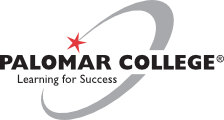
Course Outline
GEOG 143 - Introduction to Cartography and Computer Mapping
Fall Semester 2016
Basic Course Information
Courses numbered 1 - 49 are remedial or college preparatory courses which do not apply toward an A. A. Degree and are not intended for transfer. Courses numbered 50-99 apply toward an AA Degree, but are not intended for transfer. Courses numbered 100 and higher apply toward an AA Degree and/or are intended for transfer to a four-year college or university.
D - Credit - Degree Applicable
GEOG
Introduction to Cartography and Computer Mapping
Units and Hours
1
1
Grade/Pass/No Pass
| Hour Type | Units | Weekly Hours | Semester Hours x 16 Weeks | Semester Hours x 18 Weeks |
|---|---|---|---|---|
| Lecture Category - | 1.00 | 1.00 | x 16 Weeks - 16.00 | x 18 Weeks - 18.00 |
| Lab Category - | 0.00 | 0.00 | x 16 Weeks - 0.00 | x 18 Weeks - 0.00 |
| Subtotal - | 1.00 | x 16 Weeks - 16.00 | x 18 Weeks - 18.00 | |
| Out of Class Hour - | 2.00 | x 16 Weeks - 32.00 | x 18 Weeks - 36.00 | |
| Totals - | 3.00 | x 16 Weeks - 48.00 | x 18 Weeks - 54.00 |
| Hour Type | Units | Weekly Hours | Semester Hours x 16 Weeks | Semester Hours x 18 Weeks |
|---|---|---|---|---|
| Lecture Category - | 1.00 | 1.00 | x 16 Weeks - 16.00 | x 18 Weeks - 18.00 |
| Lab Category - | 0.00 | 0.00 | x 16 Weeks - 0.00 | x 18 Weeks - 0.00 |
| Subtotal - | 1.00 | x 16 Weeks - 16.00 | x 18 Weeks - 18.00 | |
| Out of Class Hour - | 2.00 | x 16 Weeks - 32.00 | x 18 Weeks - 36.00 | |
| Totals - | 3.00 | x 16 Weeks - 48.00 | x 18 Weeks - 54.00 |
Requisites
To satisfy a prerequisite, the student must have earned a letter grade of A, B, C or P(Pass) in the prerequisite course, unless otherwise stated.
Prerequisite: GEOG 120
Catalog Description
Provides the technical and design skills needed to create an effective map using Geographic Information Systems (GIS). Students will receive a review on map projection, coordinate systems, and datum transformation issues. In addition, students will learn about map templates, map annotations, and other tools that are used to enhance spatial data presentation.
Student Learning Outcomes
Outcome
Students should be able to list at least three critical map elements in a well designed map.
Students should be able to list the four possible types of distortion produced during the map projection process.
Specific Course Objectives
Objective
Upon successful completion of the course, the student will be able to:
- Create well-balanced, well-focused maps.
- Clearly explain the differences between different map types.
- Create and utilize industry-specific map templates.
- Optimize cartographic effectiveness by setting map display scales.
- Maximize clarity in spatial data presentation through the use of dynamic labels and annotations.
- Understand, create, and modify industry-specific map symbologies.
Methods of Instruction
Methods of Instruction may include, but are not limited to, the following:
Discussion
Learning Modules
Lecture
Other (Specify)
Content in Terms of Specific Body of Knowledge
- Structure of Geographic Information
- Spatial and attribute information
- Vector and raster
- Attribute data types
- Map scale
- Datum, projections, and coordinate systems
- Geographic coordinate systems
- Projected coordinate systems
- Cartography and Visual Perception Theories
- Map types
- Reference maps
- Thematic maps
- Classification techniques
- Equal intervals
- Natural breaks
- Quantile
- Standard deviation
- Manual
- Colors and map symbology
- Map generalizations
- Map layout
- Intellectual hierarchy
- Visual hierarchy
- Tools in Computer Mapping
- Dynamic labels, interactive labels, and annotations
- Layer files and map templates
- Customizing and importing map symbols
- Creating basemaps
- Internet mapping and WebGIS
- Web maps
- Web applications
Textbooks/Resources
Textbook
Krygier, John; Wood, Denis
Making Maps: A Visual Guide to Map Design for GIS
2nd
Guilford Press
2011
Law, Michael
ESRI Map Book
30th
Redlands
ESRI Press
2015
Tyner, Judith
Principles of Map Design
The Guilford Press
2014
Assignments
Students are required to read various trade publications and journal articles regarding advances in computer mapping tools and visual perception theories.
Students will complete a total of 6 learning modules throughout the course. They will be required to produce concise and well-written critiques to maps that they have perused. Furthermore, student must write clear recommendations needed to improve the layout and focus of the maps.
Student will need to peruse and evaluate maps from various GIS related industries using cartographic criteria covered in the course readings.
The final class project and map gallery presentation will require students to produce a series of maps with the appropriate scale, projection, symbologies, and other map elements. Moreover, students will need to use at least one of the computer tools (e.g. annotations) covered in the course in their projects.
Methods of Assessment
Evaluation Method
- Class Participation
- Class Work
- Demonstration
- Exams/Tests
- Oral Presentation
- Projects
- Quizzes
- Research Projects
Open Entry/Open Exit
- Not Open Entry/Open Exit
Repeatability
No
Contact Person
Cheung, Wing H.